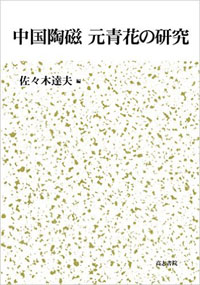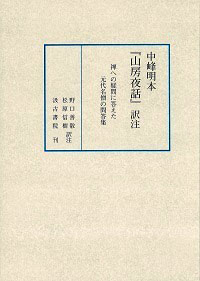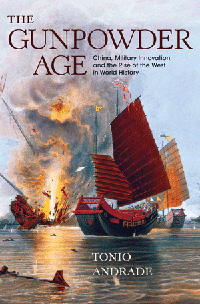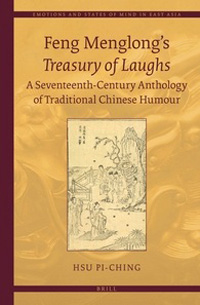日韩近期汉学出版物(十六)
22、中国陶磁——元青花の研究
时 间:2015年12月
作 者:佐々木达夫 编着
出版单位:东京:高志书院
内容简介:
総论 元青花の诞生と継承(佐々木达夫(金沢大学名誉教授)
第1部 元青花诞生とその背景
ユーラシア游牧文化における圣色「青」と「白」(四日市康博,昭和女子大学客员研究员)
元青花磁器覚书(谢明良,国立台湾大学教授)
景徳镇元青花の起源に关する在地的要因考(施静菲,国立台湾大学副教授)
宋末元初景徳镇の工房立地(水上和则,専修大学讲师)
近年の景徳镇における元青花研究から(关口広次,日本考古学协会)
元様式青花瓷はいつまで生产されたか(髙岛裕之,専修大学准教授)
至正様式青花磁器の文様构成(杉谷香代子,戸栗美术馆学芸员)
第2部 元青花のアジア流通
フィリピン出土の元青花(田中和彦,上智大学讲师)
タイ出土の元青花(向井亘,金沢大学客员研究员)
トロウラン遗迹のベトナム产タイルと元青花の文様(坂井隆,国立台湾大学副教授)
西アジアに流通した元青花(佐々木花江(金沢大学准教授)、佐々木达夫)
第3部 东北アジアの染付·青花诞生
朝鲜半岛の初期青花(吉良文男,东洋陶磁史研究家)
日本染付磁器诞生(髙岛裕之)
有田皿山における藩窑の成立背景(野上建纪,长崎大学准教授)
唐青花研究の再思考(刘朝晖,复旦大学教授)
23、中峰明本『山房夜话』訳注
时 间:2015年5月
作 者:野口善敬、松原信树 翻译
出版单位:东京:汲古书院
内容简介:
元代禅门を代表する中峰明本(一二六三~一三二三)は、无准师范(一一七八~一二四九)三伝の孙であり、临済宗杨岐派(破庵派)の系谱に属する僧侣である。その法脉は中国においては清朝に至るまで临済の正系として法孙を繁らせており、日本に黄檗宗を伝えた隠元隆琦もこの系统に属している。また日本においても、その法系は入元僧である无隠元晦(?~一三五八)、古先印元(一二九五~一三七四)、远渓祖雄(一二八六~一三四四)などによって伝えられ、幻住派として日本中世禅宗史に大きな足迹を残している。
中峰は、生涯、大刹に住持することなく、江苏·浙江の地で庵居または舟居し、修行僧や在家信者に法を说いた。従ってその『语録』には「上堂」の语はなく「示众」が存するのみであるが、その他に著述がいくつか残されている。今回、訳注の対象として取り上げた『山房夜话』三巻もその一つである。その他、今回の訳注には付録(一)として『东语西话』に见える中峰自撰の行状の文章を「中峰自叙伝」として加え、更に付録(二)として有名な『中峰和尚座右铭』を収载した。
24、The Gunpowder Age: China, Military Innovation, and the Rise of the West in World History
时 间:January, 2016
作 者:Tonio Andrade
出版单位:Princeton: Princeton University Press
内容简介:
The Chinese invented gunpowder and began exploring its military uses as early as the 900s, four centuries before the technology passed to the West. But by the early 1800s, China had fallen so far behind the West in gunpowder warfare that it was easily defeated by Britain in the Opium War of 1839–42. What happened? In The Gunpowder Age, Tonio Andrade offers a compelling new answer, opening a fresh perspective on a key question of world history: why did the countries of western Europe surge to global importance starting in the 1500s while China slipped behind?
Historians have long argued that gunpowder weapons helped Europeans establish global hegemony. Yet the inhabitants of what is today China not only invented guns and bombs but also, as Andrade shows, continued to innovate in gunpowder technology through the early 1700s—much longer than previously thought. Why, then, did China become so vulnerable? Andrade argues that one significant reason is that it was out of practice fighting wars, having enjoyed nearly a century of relative peace, since 1760. Indeed, he demonstrates that China—like Europe—was a powerful military innovator, particularly during times of great warfare, such as the violent century starting after the Opium War, when the Chinese once again quickly modernized their forces. Today, China is simply returning to its old position as one of the world’s great military powers.
By showing that China’s military dynamism was deeper, longer lasting, and more quickly recovered than previously understood, The Gunpowder Age challenges long-standing explanations of the so-called Great Divergence between the West and Asia.
About the Author
Tonio Andrade is professor of history at Emory University and the author of Lost Colony: The Untold Story of China’s First Great Victory over the West (Princeton) and How Taiwan Became Chinese.
25、Feng Menglong’s Treasury of Laughs: A Seventeenth-Century Anthology of Traditional Chinese Humour
时 间:April, 2015
作 者:Hsu Pi-ching(徐碧卿)
出版单位:Leiden: Brill
内容简介:
The Treasury of Laughs is a treasure house for students of literature, psycholinguistics, history, sociology, and cultural anthropology. Feng Menglong systematically collected and edited 700-odd humourous skits that presented the entire spectrum of traditional Chinese jokes, and wrote commentaries of great philosophical insight. The anthology offers satirical caricatures of human follies from the cradle to the grave and reveals tension in all sectors of human societies and institutions. Hsu Pi-ching reconstructs the complete Ming Chinese original with meticulous editorial work, in modern punctuated typesetting, and provides the only complete English translation available, with useful footnotes on word plays, literary allusions, and historical background. Readers should find the introductory essays on the connections between humour and emotions/states of mind particularly illuminating.
Biographical note
Hsu Pi-ching, Ph.D. (1994), University of Minnesota, is Professor of History at San Francisco State University. Her publications explore the juncture of history and literature, including Beyond Eroticism: A Historian’s Reading of Humor in Feng Menglong’s Child’s Folly.
资料来源:台北《汉学研究通讯》、台北《国家图书馆电子报》等 陈友冰辑






